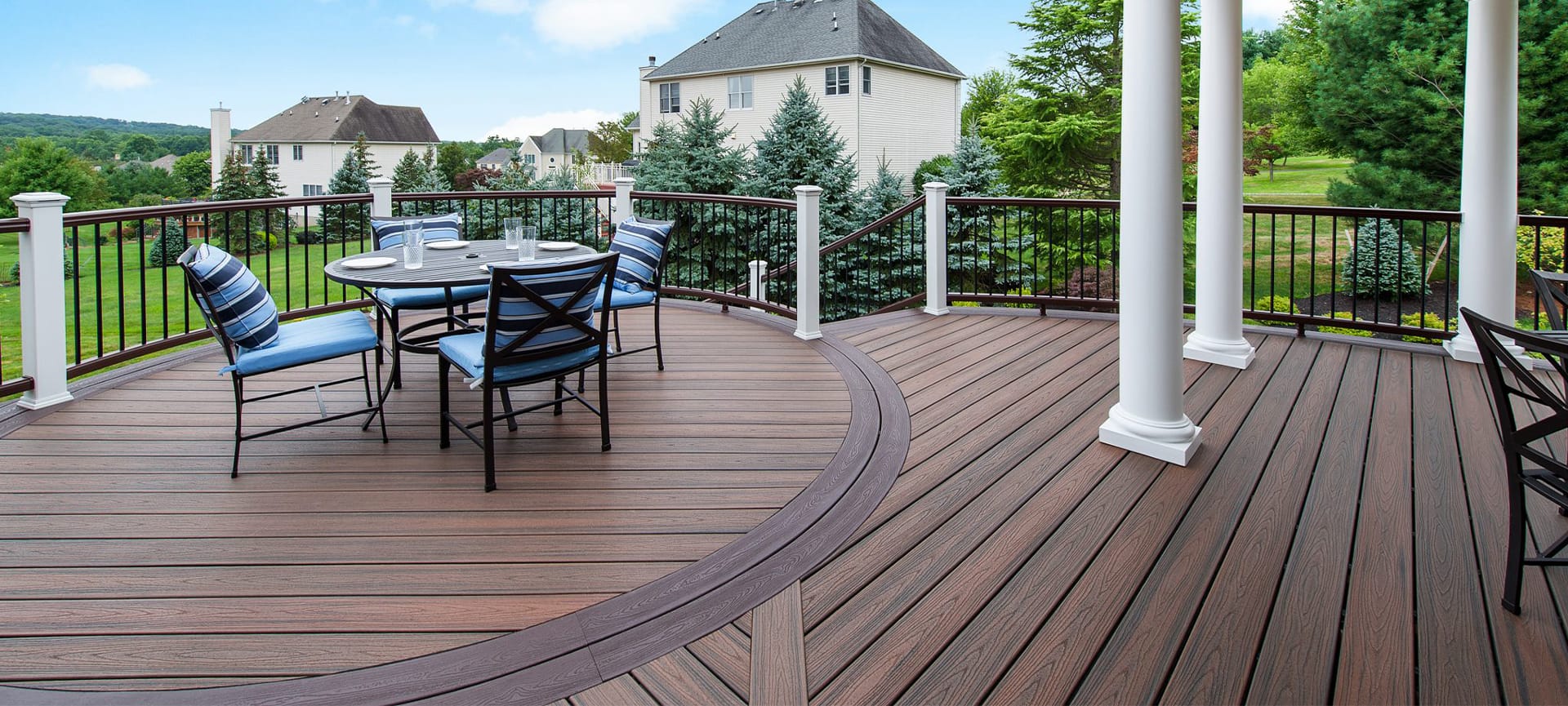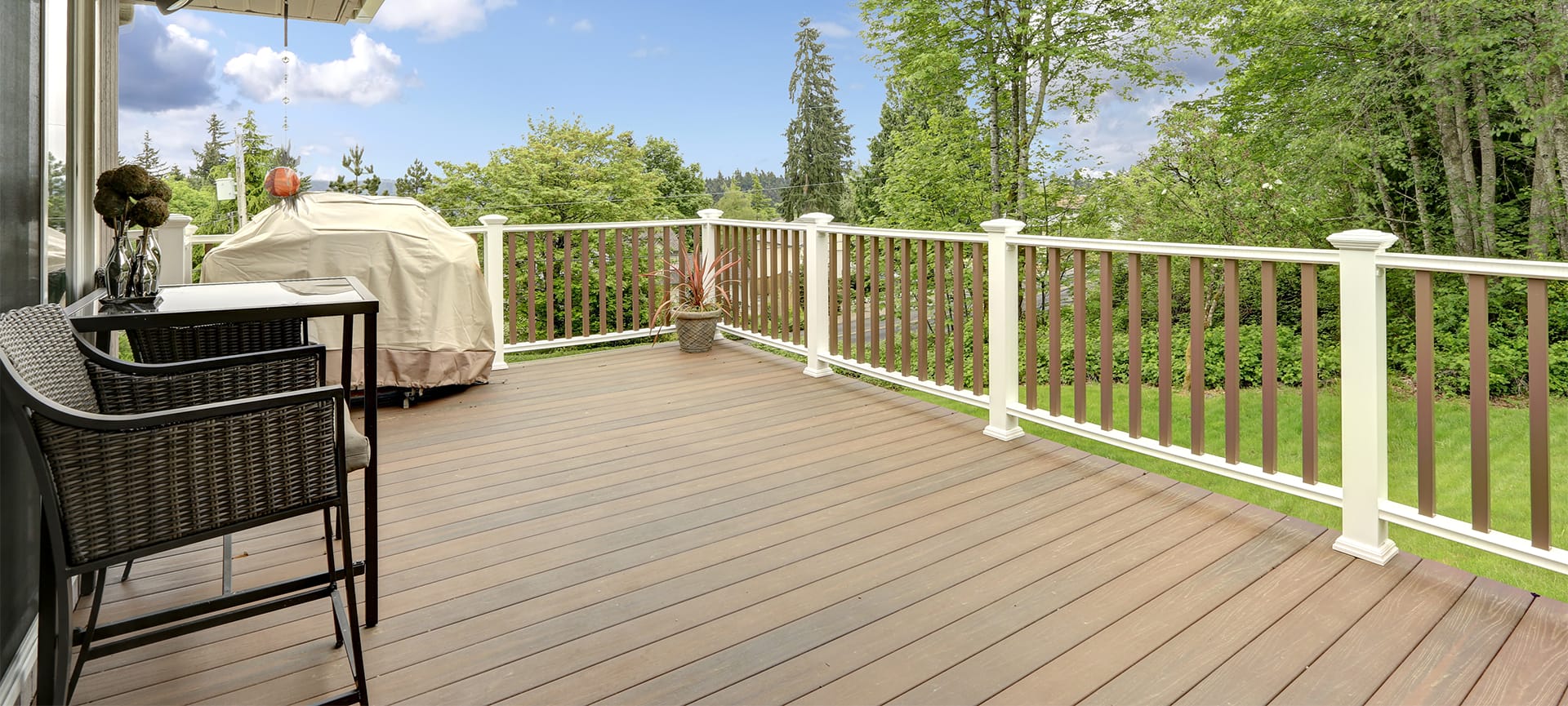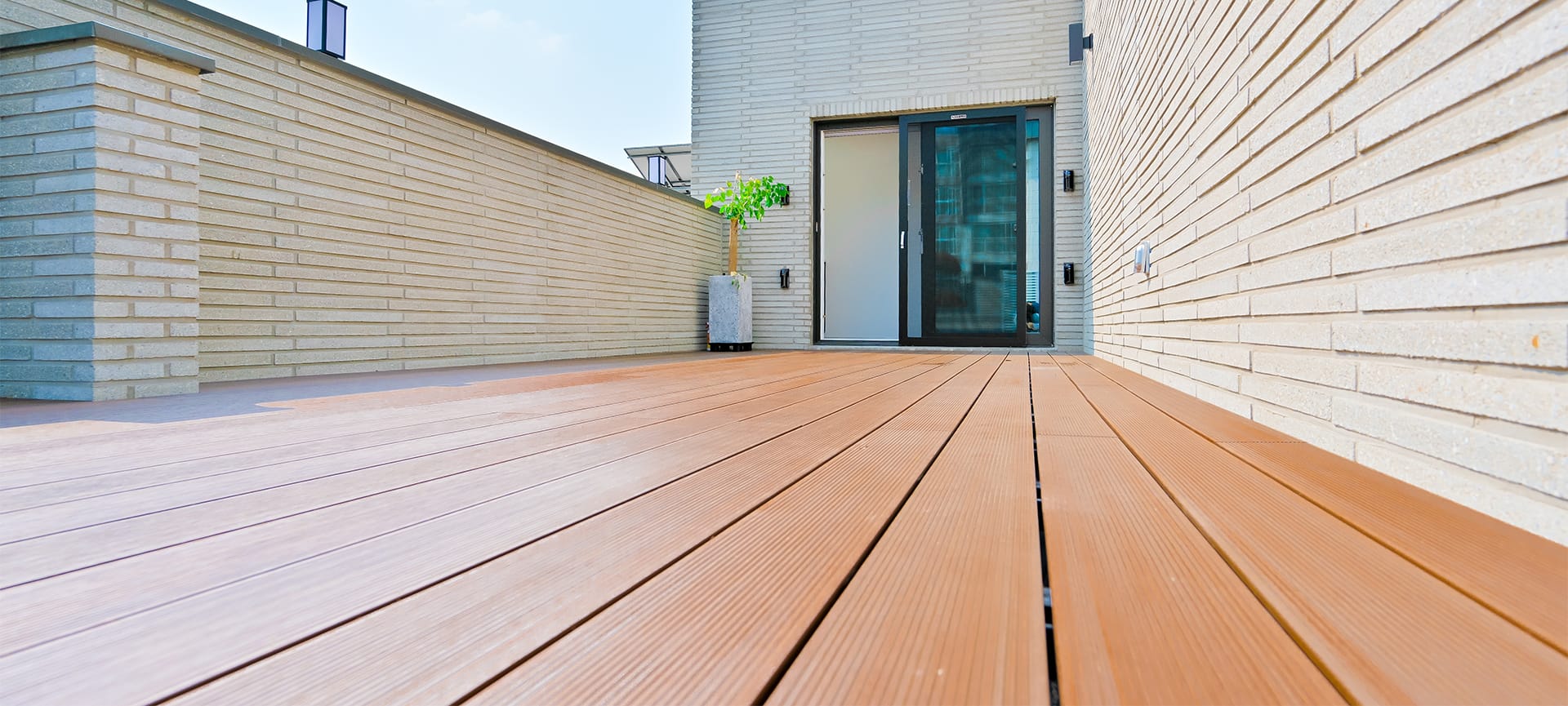
A new deck can serve as an open-air lounge, family dining room, and weekend retreat, but only if it stands the test of time. Ask five neighbours how long a deck should last, and you’re likely to hear answers ranging from ten to fifty years. The truth sits somewhere in between and depends heavily on the material under your feet.
This guide focuses on realistic lifespan ranges for the most common decking options in the Greater Toronto Area. With current data and practical upkeep tips, you’ll walk away ready to match your budget and maintenance style with the right board choice while seeing where Green Side Up Contracting can help you build for decades of safe, worry-free use.
Why Deck Lifespan Matters
Replacing a shabby surface costs far more than periodic upkeep on a solid one. Understanding service life lets you:
- Plan your long-term budget. You’ll know whether to expect a refinishing bill in five years or a full rebuild in fifteen.
- Protect resale value. A sturdy, attractive deck boosts listing photos and appraisals, while a splintered platform drags them down.
- Reduce safety hazards. Ageing lumber can hide rot or weak fasteners that put family and guests at risk.
Related Article: How to Make Your Deck Slip-Resistant
Main Factors That Shorten or Extend Service Life
Several variables influence how fast any deck ages:
- Material composition — Wood species, recycled plastic blends, or metal each respond differently to moisture and UV rays.
- Quality of installation — Proper footing depth, joist spacing, and flashing stops water damage before it starts.
- Local climate — Toronto’s freeze-thaw cycles, heavy snow loads, and summer humidity all test structural integrity.
- Maintenance routine — Regular cleaning and resealing keep mould, mildew, and rot at bay.
- Sun exposure — South-facing decks fade quicker and dry out faster than shaded ones.
No two yards have identical conditions, but these five elements set the baseline for every project.
Related Article: When Is the Best Time to Install a Deck?
Pressure-Treated (PT) Pine: Lifespan 15–20 Years
Pressure-treated lumber remains the budget champion and is still the most common choice for GTA homes.
- Pros
- Widely available and inexpensive.
- Factory treatment resists basic decay and insects.
- Easy for DIY repairs.
- Cons
- Annual washing and a two- to three-year sealing schedule are needed.
- Can warp or split if not dried and installed correctly.
- Green tint may clash with modern colour palettes.
Boost its life: Keep debris out of joist gaps, apply a penetrating oil-based stain every second spring, and redirect downspouts away from footings.

Cedar: Lifespan 20–25 Years
Western red cedar offers a warm tone and natural oils that repel insects better than pine.
- Pros
- Rich colour that ages to a silver grey if left untreated.
- Lighter weight makes installation easier on large spans.
- Cooler surface under bare feet in full sun.
- Cons
- Costs 25–40 % more than PT lumber.
- Soft grain dents and scratches faster than tropical hardwood or composite.
- Needs semi-transparent stain every two to three years to preserve original hue.
Boost its life: Use stainless-steel fasteners to stop black streaks, and coat board ends with sealant to reduce moisture wicking.
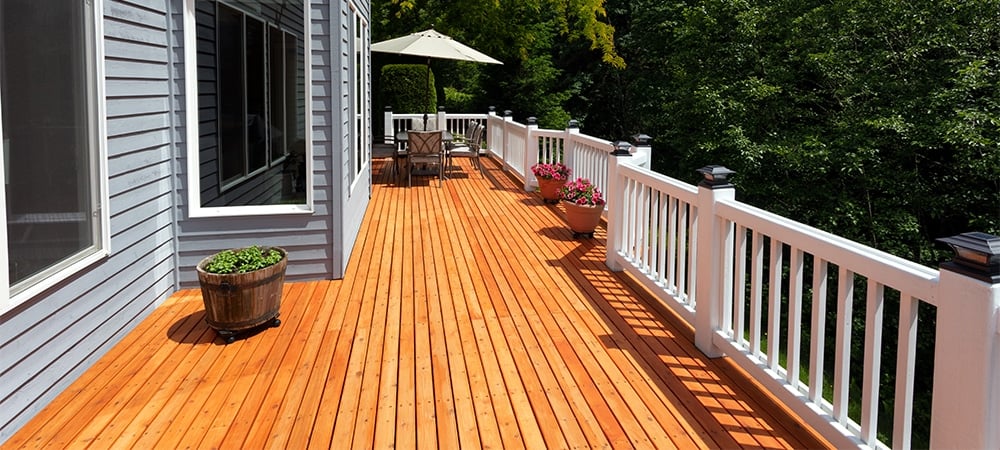
Tropical Hardwoods (Ipe, Cumaru, Tigerwood): Lifespan 40–50 Years
Dense hardwoods prized for commercial boardwalks can shrug off Toronto winters with minimal decay.
- Pros
- Extremely hard; resists rot, insects, and fire.
- Tight grain stays smooth and splinter-free.
- High resale appeal for luxury builds.
- Cons
- Upfront cost can run 3–5× PT lumber.
- Pre-drilling required; labour bills rise.
- Oil finish must be reapplied yearly if you want to keep the rich brown colour.
Boost its life: Ensure proper ventilation under the frame; hardwood traps heat and needs airflow to stay stable.

Composite (Wood–Plastic): Lifespan 25–30 Years
Modern composite boards blend recycled wood fibre with plastic, offering good durability minus intensive upkeep.
- Pros
- No staining or sealing; occasional soap-and-water wash is enough.
- Uniform colouring hides small scratches.
- Many brands carry 25-year fade and stain warranties.
- Cons
- Costs 1.5–2× PT lumber.
- Can feel hotter than wood on July afternoons.
- Poor ventilation beneath boards traps moisture, encouraging joist rot if framing is untreated.
Boost its life: Install breaker boards to avoid butt joints, and follow manufacturer joist-spacing rules for full warranty coverage.
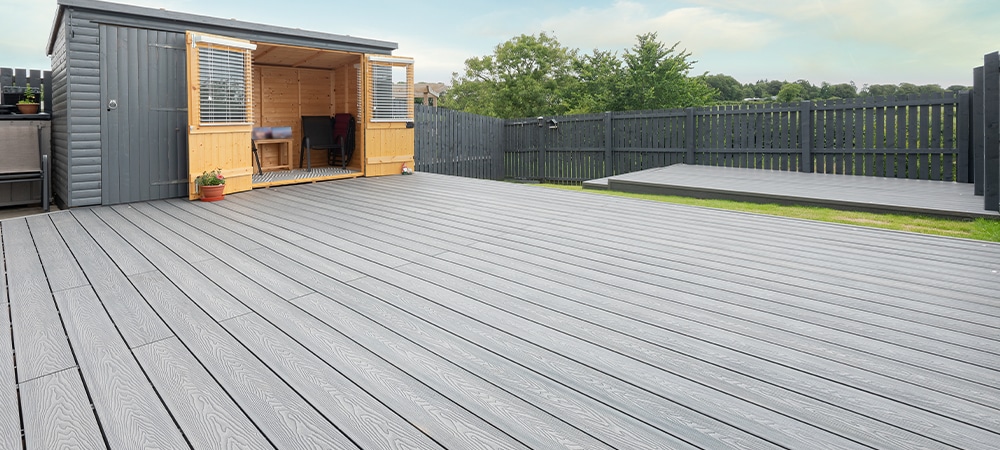
PVC (100 % Plastic): Lifespan 30–40 Years
PVC decking removes organic fillers entirely, taking rot risk close to zero.
- Pros
- Highest resistance to moisture, mould, and fading.
- Lightweight simplifies rooftop or elevated installs.
- Often includes slip-resistant textures ideal for pool surrounds.
- Cons
- Premium price—usually the most expensive synthetic.
- Thermal expansion requires correct gap spacing; mistakes lead to buckling.
- Less rigid than hardwood, so joists may need narrower spacing.
Boost its life: Choose lighter colours that reflect heat, reducing expansion stress.

Aluminum: Lifespan 50+ Years
An aluminium plank system costs more upfront but outlasts nearly every alternative.
- Pros
- Immune to rot, insects, and fire.
- Powder-coated surfaces stay colour-true with near-zero maintenance.
- Built-in drainage channels keep the area below bone-dry.
- Cons
- Cold, metallic feel can clash with natural landscapes.
- Higher material cost and specialised labour add 30 – 40 % to the bill.
Boost its life: Touch up any scratches with factory paint to prevent galvanic corrosion.

Cost vs Lifespan: Finding the Sweet Spot
Long life means little if the price sinks the budget. Below are rough “installed cost per service year” figures (using 2025 GTA averages) so you can judge which board delivers the best value over time:
- Pressure-Treated Pine — Installed at about $30 per sq ft, serves roughly 18 years, which works out to ≈ $1.70 per service year.
- Cedar — Around $45 per sq ft installed, lasts 23 years, or ≈ $1.95 per service year.
- Composite — Roughly $65 per sq ft installed, holds up for 28 years, equalling ≈ $2.30 per service year.
- PVC — About $80 per sq ft installed, carries 35 years of life, and also ≈ $2.30 per service year.
- Tropical Hardwood — Near $85 per sq ft installed, endures 45 years, meaning ≈ $1.90 per service year.
- Aluminum — Close to $90 per sq ft installed, exceeds 55 years, giving ≈ $1.65 per service year.
Choose the material whose yearly cost feels comfortable, and remember to budget extra maintenance dollars for any wood option.
Related Article: What Is the Best Pool Deck Resurfacing Material
Maintenance Moves That Extend Any Deck’s Life
Even the toughest board fails early if neglected. Follow these guidelines:
- Clean twice per season. Use a gentle deck wash to lift dirt and pollen before they trap moisture.
- Inspect hardware annually. Replace corroded screws and tighten loose rail brackets.
- Clear gaps. Sweep leaves and pine needles off; organic debris locks water against boards.
- Re-seal wood regularly. A water-bead test tells you when a stain or sealer has worn thin.
- Shovel snow with a plastic blade. Metal shovels gouge finishes and invite water penetration.
Small habits save big money over the decades. For structurally sound platforms that only show surface wear, deck restoration, including deep cleaning, board resurfacing, and fresh sealant, can extend service life by years before a full rebuild becomes necessary.
Signs It’s Time to Repair or Replace
- Soft spots underfoot or spongy steps.
- Posts pulling away from the ledger or soil.
- Ledger board lacks proper flashing or shows rot.
- Railings wobble even after tightening hardware.
- Boards stay damp days after rainfall; rot is setting in.
If three or more signs appear together, replacement often proves safer and cheaper than piecemeal fixes.
Related Article: How Does a Deck Add Home Value?
Choose Wisely, Maintain Consistently, Enjoy Longer
Deck longevity hinges on two levers — material selection and ongoing care. Pressure-treated pine can serve faithfully for two decades with diligent sealing, while PVC or aluminum can push half a century with little fuss. Factor yearly upkeep costs into the purchase price, and the best value material often becomes clear.
Ready for expert help turning lifespan math into a worry-free outdoor retreat? Contact Green Side Up Contracting today for a no-pressure consultation and see how our award-winning crews can build the last deck you’ll ever need.


